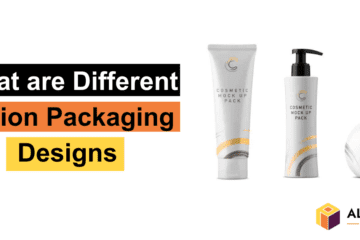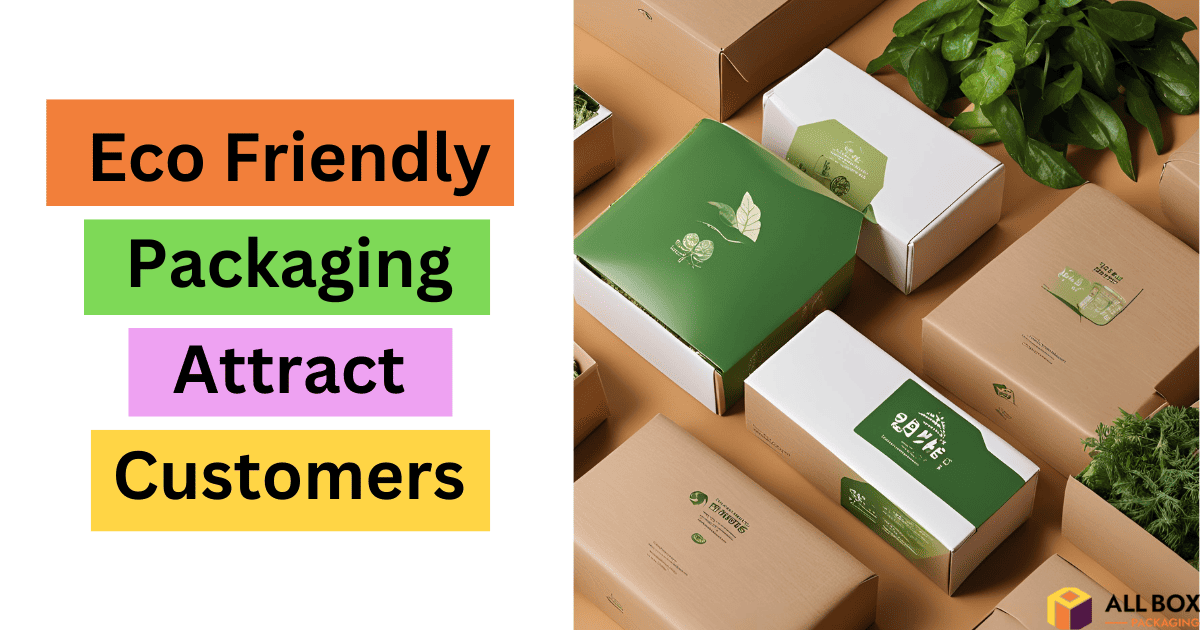
In recent years, eco-friendly packaging has evolved from a niche trend to a mainstream necessity. Consumers are more conscious than ever about the environmental impact of their purchases, and packaging plays a pivotal role in this shift. From biodegradable plastics to recyclable cardboard, brands are rethinking how their products are wrapped to meet growing sustainability demands.
Eco-friendly packaging is no longer just a ‘nice-to-have’ feature—it’s becoming a decisive factor in customer buying decisions. As sustainability takes center stage, consumers choose brands that align with their eco-conscious values.
Studies show that a significant percentage of shoppers are willing to pay a premium for products that come in environmentally responsible packaging. For businesses, this means that adopting sustainable packaging isn’t just good for the planet but also their bottom line.
The Rise of Eco-Conscious Consumers
With more information available about climate change, plastic waste, and sustainability, buyers are making more informed decisions.
Today’s consumers are looking beyond just the product— they’re considering how it’s made, how it’s packaged, and how it impacts the world.
From food and beverages to cosmetics and electronics, a growing number of shoppers are prioritizing sustainability. A 2023 survey revealed that nearly 70% of global consumers are willing to pay more for brands that are committed to sustainable practices.
This means packaging plays a critical role in shaping buying decisions. Consumers are actively seeking out products that come in eco-friendly materials and are looking to reduce their environmental footprint.
Generational Shift
Millennials and Gen Z are the driving force behind the surge in demand for sustainable products and packaging. These generations, often referred to as the “eco-conscious” cohorts, have grown up in a world increasingly shaped by environmental challenges. They are not only more informed but also more motivated to take action in favor of the planet.
For example, Gen Z has been found to prioritize environmental sustainability when making purchases, with many actively choosing brands that share their eco-values. This shift is evident across industries, from fashion (with brands offering recycled fabrics and eco-friendly packaging) to food and beverages (where sustainable packaging is now a common selling point). Brands that fail to meet these expectations risk losing out on the loyalty of these influential groups, who are shaping the future of consumerism.
The “Green” Factor
The environmental credentials of a product can significantly influence how it’s perceived by consumers. A product that boasts sustainable, recyclable, or biodegradable packaging not only appeals to the eco-conscious shopper but also conveys a message of responsibility. In a crowded marketplace, sustainability can serve as a differentiator, creating a competitive edge for brands that prioritize environmental stewardship.
Eco-friendly packaging can help build deeper connections with customers, fostering brand loyalty. A brand’s commitment to sustainability can even extend beyond just the packaging itself. By showcasing ethical sourcing, carbon footprint reduction, and transparent practices, companies can align their products with the values of today’s discerning consumer.
When customers feel that a brand genuinely cares about the environment, they’re more likely to stay loyal and share their positive experiences with others, creating a ripple effect of brand advocacy.
What Defines Eco-Friendly Packaging?
Eco-friendly packaging refers to packaging solutions designed with minimal environmental impact, focusing on sustainability at every step—from sourcing materials to end-of-life disposal. The key components that define eco-friendly packaging include the materials used.
Materials
- Recycled Paper and Cardboard
Recycled paper and cardboard boxes are among the most commonly used eco-friendly packaging materials. These materials reduce the need for virgin resources, conserving forests and reducing waste in landfills. By using recycled paper and cardboard, brands can lower their carbon footprint and support a circular economy where materials are reused. - Biodegradable Plastics
Biodegradable plastics, including polylactic acid (PLA) and polyhydroxyalkanoates (PHA), are derived from renewable plant-based sources such as corn starch or sugarcane. These materials are designed to break down naturally over time, unlike conventional plastics, which can persist in the environment for centuries. - Plant-Based Materials
Plant-based packaging materials, such as bamboo, palm leaves, and hemp, are rapidly gaining popularity. These materials are biodegradable and often require less energy to produce than traditional materials like plastic or metal. In addition to being compostable, many of these plant-based materials are also renewable, making them a more sustainable option. - Glass and Aluminum
While not biodegradable, glass and aluminum are considered eco-friendly because they are highly recyclable and can be reused infinitely without losing quality. Their recyclability helps reduce the need for new raw materials, and they often have a lower environmental impact over their lifecycle when properly recycled.
Environmental Benefits of Eco-Friendly Packaging
Eco-friendly packaging is designed to have a minimal environmental impact throughout its lifecycle. By reducing waste, conserving resources, and lowering carbon emissions, sustainable packaging practices play a pivotal role in mitigating the environmental challenges we face today.
Reduction of Waste
One of the most immediate environmental benefits of eco-friendly packaging is its potential to reduce waste, especially landfill waste. Traditional packaging, particularly plastics, takes hundreds of years to break down, contributing significantly to landfills and pollution. On the other hand, eco-friendly packaging materials like kraft boxes, and cardboard boxes are often designed to either be recyclable, biodegradable, or compostable, significantly reducing the volume of waste that ends up in landfills.
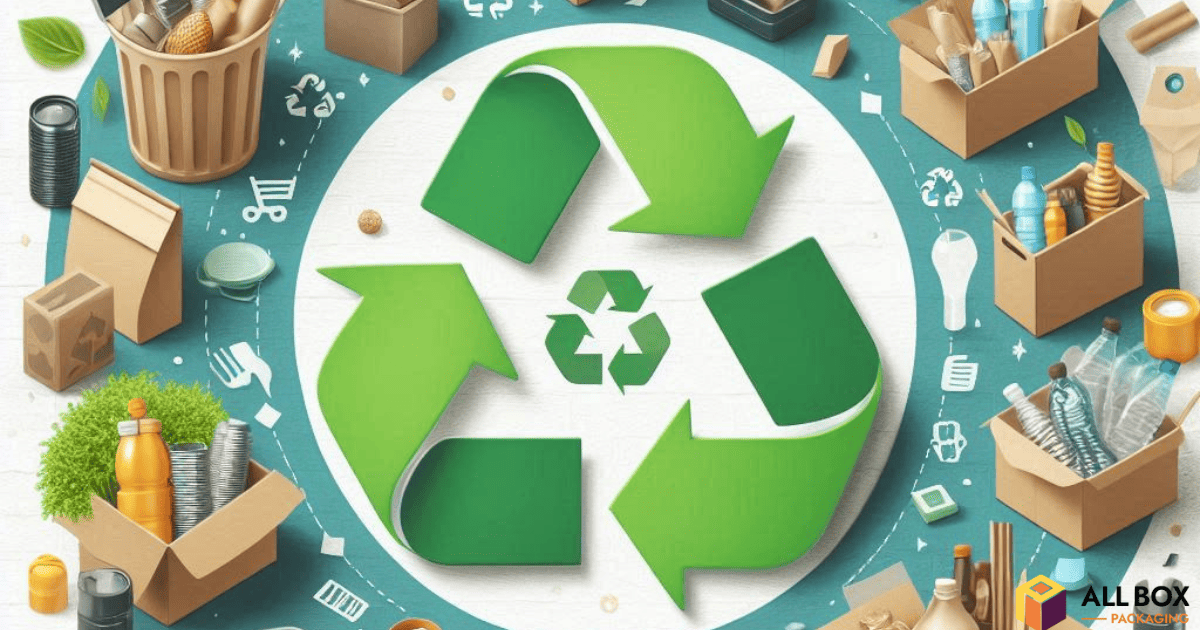
Recyclability: Many eco-friendly packaging materials, such as paper, glass, aluminum, and certain plastics (e.g., PET), can be recycled, meaning they can be reused to make new products instead of being discarded as waste. A product’s packaging that is labeled as “recyclable” encourages consumers to dispose of it responsibly, reducing the environmental burden.
Eco-Friendly Packaging and Customer Attraction
Adopting eco-friendly packaging can significantly enhance a brand’s attractiveness, especially in a world where consumers are becoming increasingly conscious of environmental issues.
Eco-conscious customers are looking for products that align with their values. By switching to sustainable packaging, businesses can tap into this growing consumer preference, thereby creating a strong, emotional connection with their audience.
Businesses that adopt eco-friendly packaging often see an increase in brand loyalty and customer attraction because they provide customers with more than just a product—they offer a way to make a positive environmental impact with their purchasing choices. This resonates particularly with younger consumers, who tend to prioritize sustainability.
For example, eco-friendly packaging often involves using recycled or biodegradable materials, which reduces the overall carbon footprint of the product and aligns with consumers’ growing concern for the planet.
Moreover, eco-friendly packaging can differentiate a brand from its competitors, creating a unique selling proposition. It’s also a strong marketing tool: brands can emphasize their commitment to sustainability in their messaging, further attracting consumers who prioritize ethical consumption.
Brand Loyalty: Strengthening through Shared Values
Brands that adopt eco-friendly packaging can foster deeper customer loyalty by aligning themselves with values their target market cares about. When a company actively demonstrates environmental responsibility, it builds emotional connections with its audience, making consumers feel good about their purchasing decisions. This shared commitment to sustainability strengthens customer loyalty as consumers feel like they are part of a bigger movement that supports a more sustainable future.
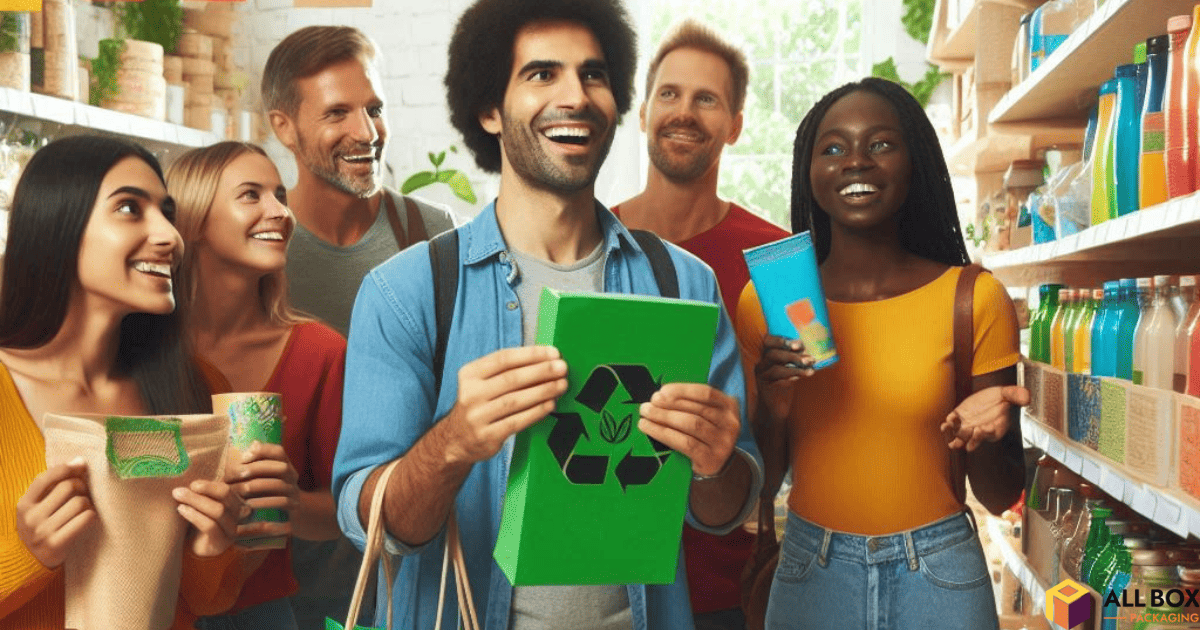
Customers today are not only looking for a good product; they want to see brands reflect their social and environmental values. Companies that are transparent about their sustainability efforts and showcase tangible steps in reducing their environmental impact create a deeper sense of trust and loyalty.
For example, brands like Patagonia or The Body Shop have successfully created lasting bonds with their customers by prioritizing eco-consciousness in every aspect of their business, from sourcing raw materials to packaging choices.
This loyalty often translates into repeat purchases, positive word-of-mouth referrals, and even customer advocacy, which can serve as invaluable assets for any brand.
Trust and Transparency: Earning Consumer Confidence
Transparency is a cornerstone of building trust with consumers, especially when it comes to sustainability claims. As eco-friendly packaging becomes more mainstream, customers are becoming more aware of “greenwashing”—the practice where companies make misleading claims about their environmental practices.
To combat this, brands must go beyond surface-level claims and provide clear, verifiable information about the sourcing, production processes, and disposal of their packaging materials.
Brands that embrace sustainability and openly communicate the steps they are taking to reduce their environmental impact tend to build trust with their customers. For instance, a company that openly shares its carbon footprint or the percentage of its packaging that is recyclable or compostable signals to consumers that they are serious about their commitment to sustainability. This transparency is key to fostering long-term relationships with customers who prioritize honesty and accountability.
Furthermore, trust is also built when brands take steps to provide education on sustainability. Companies can host informational content on their website, use social media to discuss their environmental initiatives, or even engage in certifications or third-party audits that substantiate their eco-friendly claims. This positions the brand as a credible authority in the field and strengthens consumer trust.
Premium Pricing: Willingness to Pay More for Sustainable Options
One of the key aspects of eco-friendly products is that they often come with a higher price tag. This is largely due to the higher cost of sustainable materials, ethical sourcing, and eco-friendly production practices. However, consumers are increasingly willing to pay a premium for products with eco-friendly packaging.
There are a few reasons behind this willingness to pay more:
- Value Alignment: Consumers who care about sustainability see paying more for eco-friendly products as an investment in the planet’s future. They are willing to make sacrifices in price because the environmental benefits align with their core values. In some cases, paying more is seen as a conscious decision to support companies that are contributing to positive environmental change.
- Perceived Quality: Eco-friendly products are often associated with higher quality For example luxury packaging. Consumers may view these products as better for their health or as more durable. Eco-friendly packaging may also give off the impression of a higher-end product, which can justify a premium price.
- Long-Term Impact: Consumers are increasingly aware of the long-term environmental consequences of their purchases. By opting for sustainable options, they feel they are contributing to a larger cause and are willing to pay extra for the peace of mind that comes with supporting environmentally friendly practices.
- Scarcity and Exclusivity: Eco-friendly products often have limited availability, especially if they are made with rare, sustainable materials or small-scale, ethical production methods. This sense of scarcity can make these products feel exclusive and worth the extra cost, as consumers seek to support brands that stand out from mass-produced, non-sustainable options.
The Role of Packaging in the Customer’s Buying Decision
Packaging plays a crucial role in shaping a customer’s buying decision, often serving as the first point of contact between the consumer and the brand. With the increasing awareness around sustainability, packaging has evolved into more than just a functional component—it has become a key element of a brand’s identity and a significant influence on purchasing behavior.
Eco-friendly packaging, in particular, stands out as a powerful tool for shaping perceptions, conveying values, and making the product more attractive to consumers who prioritize environmental responsibility.
First Impressions Matter
When a consumer picks up a product, the packaging is the first thing they notice, and it speaks volumes about the brand’s identity. Eco-friendly packaging is increasingly recognized as a symbol of a company’s commitment to sustainability, and for many consumers, this is a deciding factor.
When consumers see eco-friendly packaging, such as materials that are biodegradable, recyclable, or made from post-consumer content, they immediately recognize that the brand values the environment. This can be a major draw for environmentally conscious shoppers who are actively seeking products that align with their personal values.
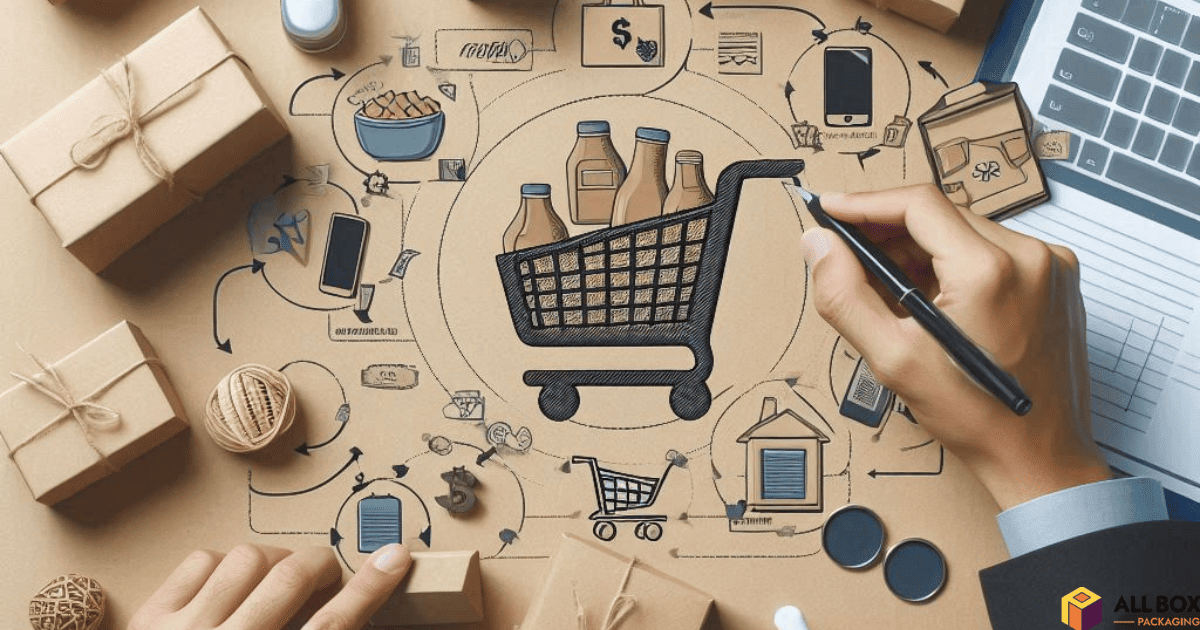
In many cases, eco-friendly packaging is a differentiator that helps a product stand out on the shelf among competitors with traditional, non-sustainable packaging. It can communicate a sense of care and responsibility that consumers are eager to support.
Brands like Lush and Seventh Generation have leveraged eco-friendly packaging to signal their commitment to sustainability, capturing the attention of eco-conscious buyers who are not just interested in a product’s functionality but also its environmental impact. In this sense, packaging is not just protective; it is a valuable marketing tool that communicates brand values from the very first impression.
Visual Appeal: Minimalism and Natural Designs for Authenticity
In today’s consumer market, there is a growing desire for authenticity, simplicity, and transparency. This desire is reflected in the rise of minimalist and natural packaging designs, especially in the context of eco-friendly packaging. Consumers increasingly appreciate designs that are clean, straightforward, and free of excessive embellishments or artificial elements.
Minimalist eco-friendly packaging, often featuring natural colors like earthy greens, browns, or soft neutrals, communicates a brand’s commitment to simplicity and environmental consciousness. This type of packaging is visually appealing because it reflects an ethos of “less is more.”
Consumers today are looking for brands that are honest and transparent, and minimalist designs often evoke a sense of purity, authenticity, and intentionality. These designs can also highlight the product itself, rather than distracting from it with unnecessary decorations or complex designs, which aligns with the broader consumer desire for a return to simplicity.
For example, brands like Everlane or S’well use simple yet elegant packaging that communicates sustainability while maintaining an upscale, refined aesthetic. These minimalist designs often feature eco-friendly materials like kraft paper, recycled plastics, or glass, which enhance the natural, no-frills appeal of the product.
In essence, the visual appeal of eco-friendly packaging is not only about looks but also about aligning the design with the values of consumers who seek products that are genuine, honest, and environmentally responsible.
Educational Opportunities: Packaging as a Tool for Consumer Education
Eco-friendly packaging provides brands with an excellent opportunity to educate consumers about sustainability and the environmental benefits of the products they purchase. Packaging is no longer just a vessel for the product but can be a communication channel that empowers consumers with knowledge about how they can make more sustainable choices.
Brands can use their packaging as a platform to highlight key environmental information, such as:
- Material Sourcing: Detailing how the materials used in the packaging are sustainably sourced, whether it’s from recycled content, renewable resources, or responsibly harvested materials.
- Recycling Information: Providing clear instructions on how to recycle or properly dispose of the packaging, ensuring that consumers know how to participate in the circular economy.
- Environmental Impact: Sharing facts about the reduction in carbon footprint or water usage that results from choosing eco-friendly materials or packaging processes.
- Sustainability Certifications: Featuring third-party certifications or eco-labels such as FSC-certified paper to provide proof of the company’s sustainability efforts.
For instance, the packaging of a product might include a message that educates the consumer on how to recycle the container properly, or it could explain how the brand’s use of biodegradable materials is helping reduce waste. Many companies also use packaging to share information on how the product inside contributes to sustainable living or how the brand itself is making efforts to reduce its overall environmental impact.
Not only does this foster a stronger relationship between the brand and the consumer, but it also empowers consumers to make informed, conscious decisions. It creates a sense of transparency and engagement that can strengthen brand loyalty, as customers appreciate knowing the impact of their purchases and the role they play in supporting sustainability.
For example, companies like The Honest Company and Grove Collaborative provide detailed information on the environmental impact of their packaging and how consumers can contribute to sustainability efforts, often right on the product packaging itself. This kind of transparency builds trust and helps position the brand as an ethical leader in the market.
Challenges and Considerations in Adopting Eco-Friendly Packaging
While eco-friendly packaging offers many benefits, its adoption comes with a set of challenges that businesses must carefully consider. Balancing sustainability with practicality is key to ensuring that the transition to more environmentally friendly options is both effective and feasible.
Cost vs. Benefit: Addressing the Cost Challenges
One of the most significant barriers to adopting eco-friendly packaging is the higher cost associated with sustainable materials and production methods. Eco-friendly packaging materials, such as biodegradable plastics, recycled content, or compostable options, often cost more than traditional packaging made from virgin plastic or other less sustainable materials. The costs come from sourcing, production, and often the smaller economies of scale, as sustainable options are not always as widely produced or available.
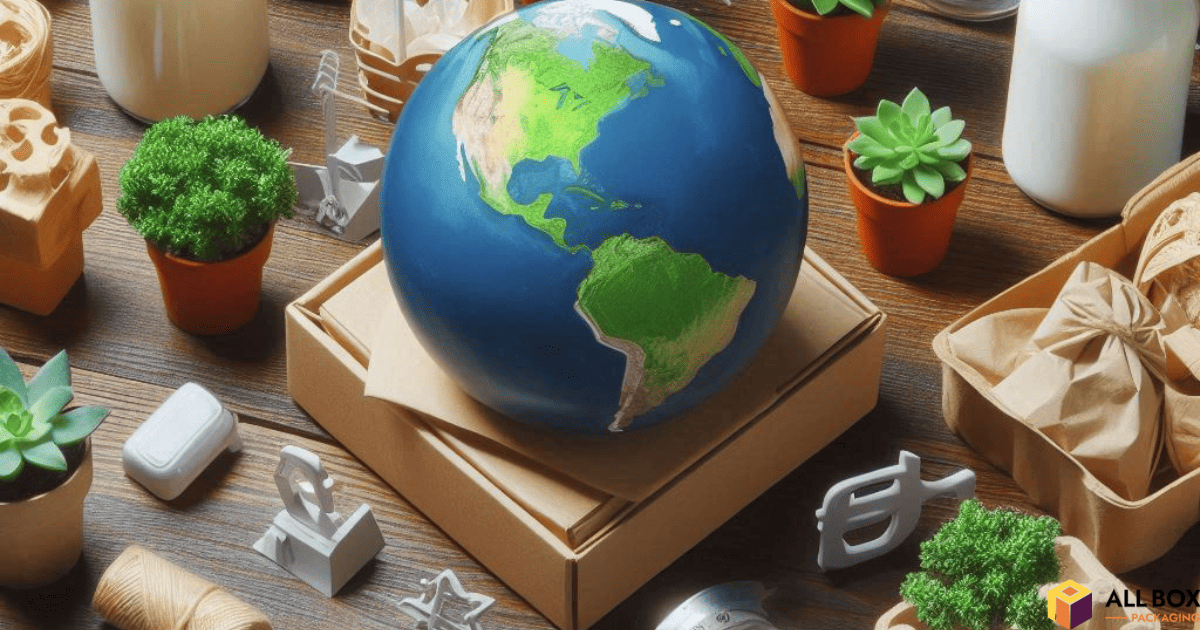
For many businesses, the price difference between eco-friendly and conventional packaging may seem prohibitive, especially for small businesses with tighter margins. This price gap can force companies to either absorb the additional cost, which could reduce their profit margins, or pass the cost onto consumers through higher prices.
In some cases, the decision to adopt sustainable packaging may require a reassessment of the company’s overall pricing strategy, as consumers may not always be willing to accept higher prices without a clear understanding of the value they’re receiving.
However, the long-term benefits can outweigh the initial cost challenges. Brands that invest in eco-friendly packaging may see increased customer loyalty, improved brand perception, and the ability to command premium pricing for products with sustainable attributes.
Moreover, as demand for eco-friendly packaging continues to grow, production efficiencies are expected to improve, which could help reduce costs over time. Businesses can also capitalize on the growing trend of “green marketing,” where consumers are willing to pay slightly more for products that align with their environmental values.
Functionality and Quality: Addressing Practicality and Durability
A common concern with eco-friendly packaging materials is whether they can offer the same level of functionality and durability as traditional packaging. For example, many sustainable materials, such as biodegradable plastics or paper packaging, may not provide the same level of protection for products as their plastic counterparts. This can be especially problematic for products that require a high level of protection from moisture, oxygen, or other environmental factors.
In addition, eco-friendly packaging may be perceived as less durable, leading to concerns about its ability to withstand shipping, handling, or storage without compromising the quality of the product inside. This perception can deter businesses from making the switch, particularly for products that are sensitive to damage, like electronics, cosmetics, or perishable food items.
However, advancements in sustainable packaging technologies are rapidly addressing these concerns. New biodegradable, plant-based plastics and innovative materials like mushroom-based packaging or seaweed-derived products are being developed to offer the same durability as traditional plastics, while also being more environmentally friendly.
Brands can also combine eco-friendly materials with smart designs to improve durability without compromising sustainability. For instance, a product might use a recyclable cardboard box with a biodegradable inner liner to protect fragile items.
Ultimately, businesses must carefully assess the specific needs of their products to determine if eco-friendly packaging materials are suitable and find a balance between sustainability and practicality. With the growing availability of eco-friendly packaging options that are both functional and sustainable, businesses can often achieve the best of both worlds.
Consumer Perception: Overcoming Skepticism About Eco-Friendly Claims
As the demand for sustainable products increases, consumers are becoming more skeptical about eco-friendly claims. One of the biggest challenges businesses face when transitioning to eco-friendly packaging is convincing consumers that their claims are authentic and not just a marketing ploy (a practice known as “greenwashing”).
The marketplace is crowded with competing claims, and consumers are increasingly aware of misleading advertising. This skepticism can undermine the effectiveness of eco-friendly packaging, even when it’s genuinely sustainable.
Consumers expect transparency and want to know that the friendly packaging is not only made from sustainable materials but that it is also truly effective in terms of environmental benefits. For example, a package labeled “biodegradable” might raise questions: How long does it actually take to break down? Does it require special conditions to decompose? Is it fully compostable in the average consumer’s home composting system?
To build trust and credibility, brands must embrace clear labeling and transparency. This includes providing detailed information about the sourcing of materials, the environmental impact of the packaging, and any certifications that validate the company’s sustainability claims.
Brands can also use packaging as a platform for educating consumers on how they can properly dispose of or recycle the packaging, making it easier for them to take part in sustainable practices.
Certifications play a significant role in consumer perception. For example, labels like “Certified Compostable,” “Recyclable,” or “Made with Recycled Materials” can help consumers make informed decisions and reduce skepticism. Third-party audits and clear communication about the environmental impact of the packaging can further reinforce a brand’s commitment to sustainability.
It’s important to recognize that the more a brand invests in transparent and authentic communication, the more likely consumers are to trust the eco-friendly claims, leading to positive word-of-mouth and long-term loyalty.
Brands Successfully Using Eco-Friendly Packaging
Adopting eco-friendly packaging can lead to a range of benefits, from enhanced brand loyalty to increased sales. Here are some leading examples of brands that have effectively implemented eco-friendly packaging:
1. Patagonia
Patagonia has long been a champion of sustainability, and this extends to its packaging choices. The company uses 100% recyclable cardboard for its boxes and has switched to using more eco-friendly materials for hangtags and labels. Furthermore, Patagonia has committed to using recycled content in its product packaging, including its famous jackets that come in reusable or recyclable bags.
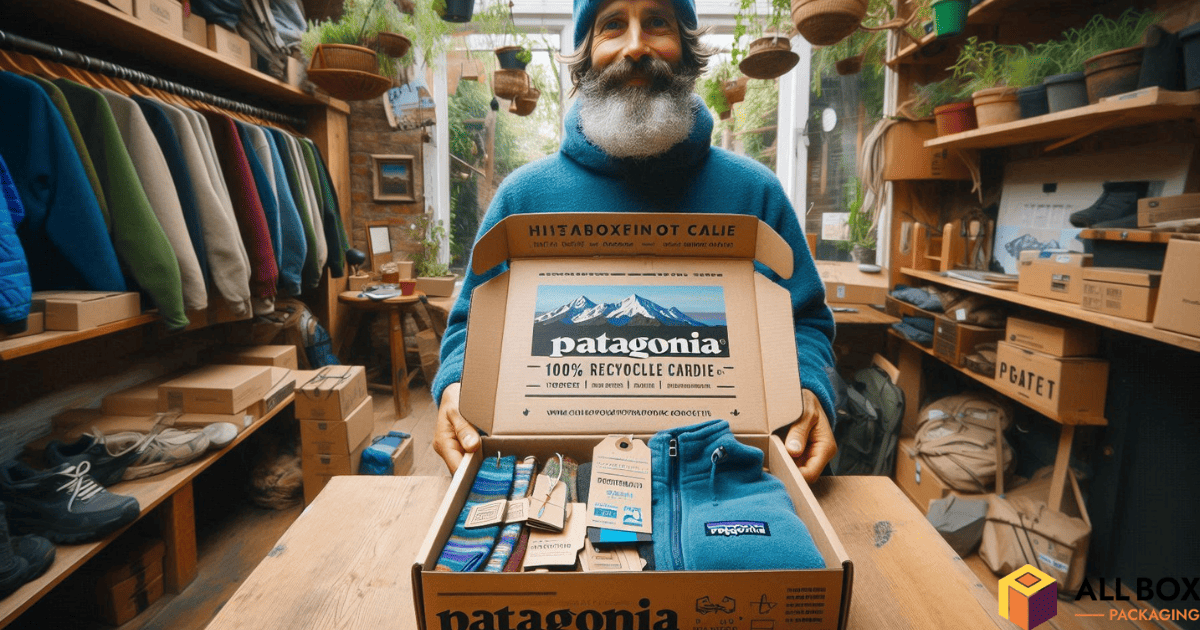
Patagonia’s customers are deeply committed to environmental sustainability, and the brand’s dedication to eco-friendly packaging reinforces its environmental message. By staying true to its sustainability values, Patagonia has been able to attract loyal customers who value eco-conscious practices. This, in turn, has helped foster a strong brand identity.
Impact on Sales: Patagonia’s eco-friendly packaging aligns perfectly with its corporate message, and they have reported consistent growth in customer loyalty and sales.
Moreover, their commitment to sustainability has allowed them to justify higher pricing on products, as consumers are willing to pay more for items that align with their values. The focus on environmental responsibility helps build consumer trust and enhances brand equity.
Unilever
Unilever, a global leader in consumer goods, has made significant strides in adopting sustainable packaging across its many product lines. They’ve taken steps to reduce the amount of plastic used in their packaging and are increasing their use of post-consumer recycled plastic. Notable brands under Unilever, like Dove and Hellmann’s, are incorporating eco-friendly packaging solutions.
Unilever’s commitment to eco-friendly packaging is part of a larger sustainability strategy that resonates with eco-conscious consumers. By prioritizing the environmental impact of its packaging, Unilever is fostering loyalty among consumers who prefer brands that take responsibility for their ecological footprint. Moreover, eco-friendly packaging aligns with the growing global trend of reducing plastic waste, which appeals to environmentally conscious consumers.
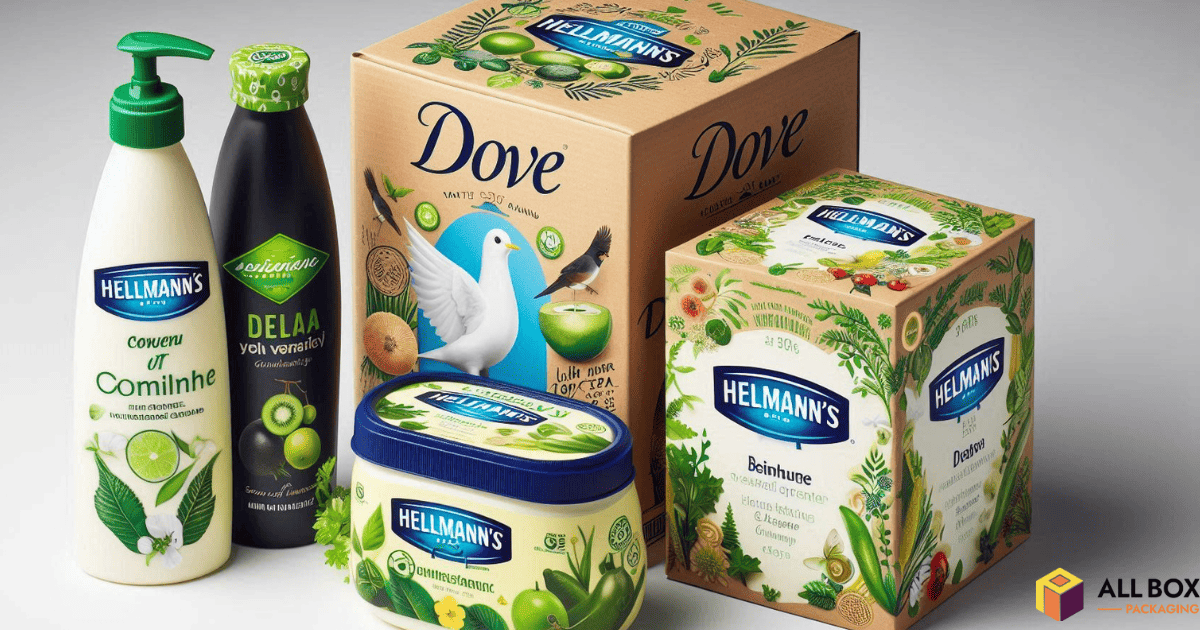
According to Unilever, their commitment to sustainable products and packaging has contributed to a growth in sales, particularly with younger, eco-conscious consumers. Their “Sustainable Living” brands, such as Dove, Seventh Generation, and Ben & Jerry’s, have shown growth compared to other product lines, underscoring the positive impact that eco-friendly packaging can have on customer engagement and sales.
Lush
Lush, the cosmetics brand known for its fresh, handmade products, has long been a pioneer in using sustainable and eco-friendly packaging. The brand focuses heavily on reducing plastic waste, offering customers products in minimal or no packaging at all. Their popular “naked” products, such as shampoos and conditioners, are sold without packaging altogether, and their packaging is made from recycled or biodegradable materials.
Lush’s commitment to sustainability is not just a marketing strategy; it’s deeply integrated into the company’s culture. Lush’s eco-friendly packaging and no-waste initiatives appeal to customers who are passionate about reducing their environmental footprint. The brand’s playful and natural packaging further reflects its ethos of authenticity and simplicity, which resonates with the target audience.
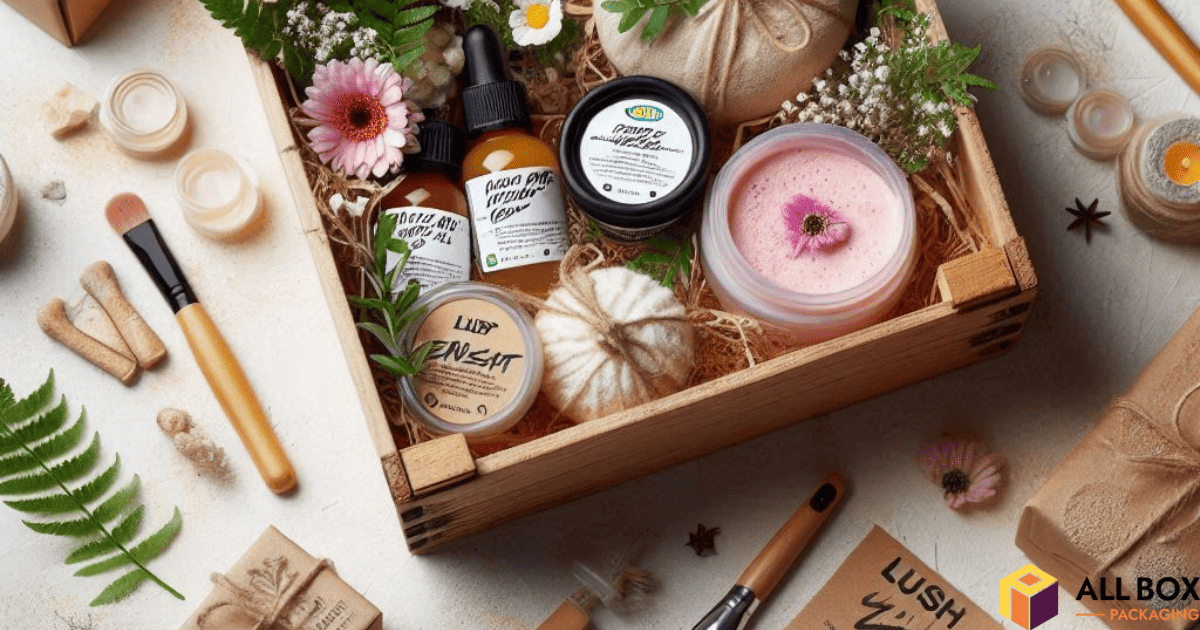
Impact on Sales: Lush has successfully combined sustainability with product innovation. The company’s “naked” packaging has been particularly popular, with customers appreciating the opportunity to purchase high-quality products without the environmental cost of traditional packaging.
As a result, Lush has been able to build a loyal customer base and generate significant sales from eco-conscious consumers. Lush also enjoys positive media attention and word-of-mouth marketing, further boosting brand awareness and sales.
Nestlé: Paper Packaging for Chocolate
Nestlé has made headlines with its commitment to switch to paper packaging for its popular chocolate products, including some of its KitKat bars. By replacing plastic with paper packaging that is recyclable, Nestlé aims to meet consumer demand for more sustainable options and reduce plastic waste.
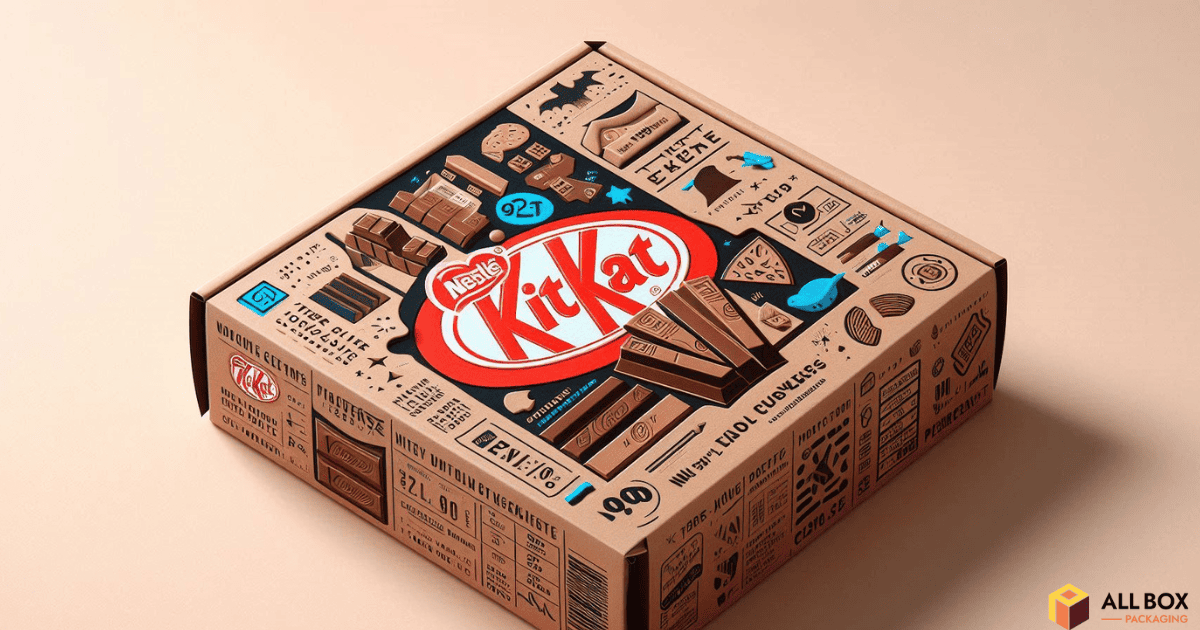
Nestlé’s shift to paper packaging has garnered significant attention, particularly in markets like Europe where environmental issues are a top concern. This transition has enhanced Nestlé’s brand image as a responsible company, leading to greater consumer trust and engagement. While the full sales impact is still being analyzed, the response from consumers has been overwhelmingly positive, with many praising the company for taking steps toward a more sustainable future.
The Future of Eco-Friendly Packaging: Trends and Innovations
The eco-friendly packaging industry is evolving rapidly as both consumer expectations and technological advancements continue to shape the future. Brands are increasingly looking for ways to reduce environmental impact, meet sustainability goals, and appeal to an eco-conscious market. From zero-waste packaging solutions to innovative new materials, the future of sustainable packaging promises to be exciting and transformative.
Trends to Watch in Sustainable Packaging
1. Zero-Waste Packaging
Zero-waste packaging is a rapidly growing trend, driven by the desire to eliminate packaging waste entirely. This involves designing packaging that doesn’t create waste when used, often through the use of reusable, refillable, or compostable packaging. Companies are beginning to embrace the idea of creating packaging that can be reused multiple times or easily recycled at the end of its life cycle.
Key Examples:
- Loop: This is an initiative by TerraCycle that allows consumers to purchase products in durable, reusable containers. When consumers finish their products, the containers are returned, cleaned, and refilled. This model has gained traction in industries ranging from beauty to cleaning products.
- Refill Stations: Brands like Ecover and Lush are offering refill stations for products like soap, shampoo, and detergent, allowing customers to reuse the same containers, significantly reducing packaging waste.
As consumers become more attuned to the environmental impact of waste, the zero-waste movement is gaining momentum. Brands that adopt zero-waste packaging can appeal to a loyal segment of consumers committed to reducing their ecological footprint.
Edible Packaging
Edible packaging is an innovative concept that is gaining attention in the food and beverage industry. Instead of being thrown away or recycled, edible packaging is designed to be consumed along with the product it contains. This type of packaging is often made from natural, edible ingredients like seaweed, rice, or fruit, reducing waste significantly.
Key Examples:
- Loliware: A company that creates edible cups made from seaweed, aimed at reducing single-use plastic cups. The cups are designed to be eaten after use, offering a sustainable alternative to traditional plastic.
- Skipping Rocks Lab: Makers of Ooho, an edible water bottle made from seaweed extract. The product is biodegradable and can be eaten, providing a novel way to reduce plastic water bottle waste.
Edible packaging has the potential to revolutionize packaging in food and beverages, especially as environmental concerns around single-use plastics intensify. This innovation not only reduces waste but also opens up new possibilities for edible, on-the-go packaging solutions.
Upcycling Packaging Materials
Upcycling involves taking waste materials and transforming them into new products with greater value. In the context of packaging, upcycling is being explored as a way to repurpose materials that would otherwise be discarded, such as post-consumer waste, industrial by-products, or even food scraps.
Key Examples:
- Parley for the Oceans: A collaboration between brands like Adidas and Parley has resulted in the creation of shoes and apparel made from upcycled ocean plastic. This concept is now being applied to packaging, where brands use repurposed ocean plastic or post-consumer plastic waste for packaging materials.
- Wool and the Gang: This fashion brand uses upcycled yarn made from recycled plastic bottles for its product packaging, as well as for the clothing itself.
Upcycling is an effective way to minimize waste by turning discarded materials into valuable resources, contributing to a circular economy. It’s also a way for brands to demonstrate a strong commitment to sustainability by reducing the need for new raw materials.
Mushrooms as Packaging Materials (Mycelium)
Mycelium, the root structure of mushrooms, is being used as a new sustainable material for packaging. Mycelium-based packaging is completely biodegradable and can be grown into specific shapes, offering a customizable and eco-friendly solution. Once the packaging is no longer needed, it can be composted or left to biodegrade.
Key Examples:
- Ecovative Design: A leading company in mycelium packaging, Ecovative creates packaging materials using mushrooms. Their packaging can replace plastic foams and other conventional materials, offering an eco-friendly alternative that decomposes quickly.
- Dell Technologies: As part of its efforts to reduce plastic waste, Dell has used mycelium-based packaging to ship electronics, providing a sustainable alternative to Styrofoam.
Why it matters: Mycelium offers a highly sustainable, biodegradable alternative to traditional plastic foams and packaging materials. It grows rapidly, requires fewer resources to produce, and can be disposed of without harming the environment, making it a promising material for future packaging.
Smart Packaging with Sustainability Features
The rise of smart packaging technology is shaping the future of sustainable packaging. Smart packaging involves embedding sensors or QR codes into the packaging that can provide consumers with real-time information about the product’s environmental impact, lifecycle, and recycling instructions.
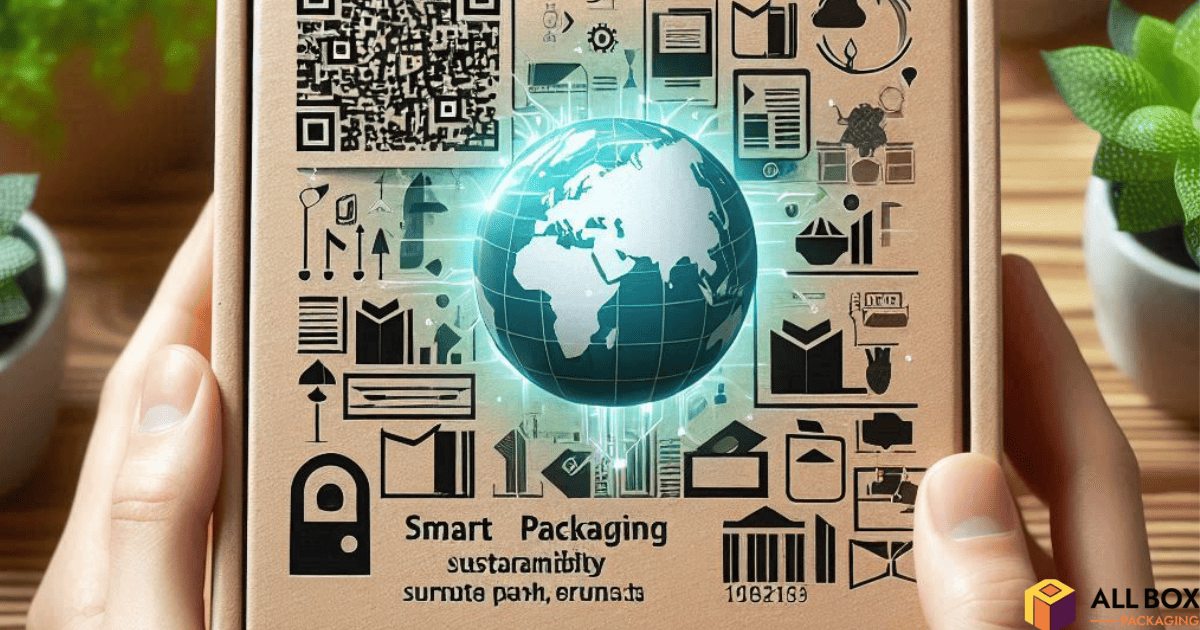
Key Innovations:
- QR Codes for Recycling Information: Brands like Coca-Cola and Unilever are experimenting with QR codes on packaging that provide consumers with detailed recycling instructions. These codes can also communicate the carbon footprint of the product or offer information about sustainable sourcing.
- Sensors for Freshness: Smart packaging can also include freshness sensors, which help consumers know when the product inside is still fresh. This can lead to less food waste, contributing to sustainability efforts.
Smart packaging empowers consumers to make more informed choices about recycling and sustainability. As more consumers seek transparency, smart packaging solutions will play a key role in bridging the gap between brands and eco-conscious buyers.
Seaweed-Based Packaging
Seaweed-based packaging, derived from algae, is one of the most exciting new materials to emerge in the eco-friendly packaging world. Seaweed is highly abundant, biodegradable, and can be used to create flexible, edible packaging solutions.
Seaweed is one of the most sustainable raw materials available, requiring minimal resources to grow and offering the potential to revolutionize packaging across industries. As consumers and companies continue to seek alternatives to plastic, seaweed packaging could be a game-changer.
Eco-friendly packaging has emerged as a powerful tool for businesses to attract and retain customers. By aligning with consumers’ growing environmental concerns, brands can build strong connections based on shared values.



